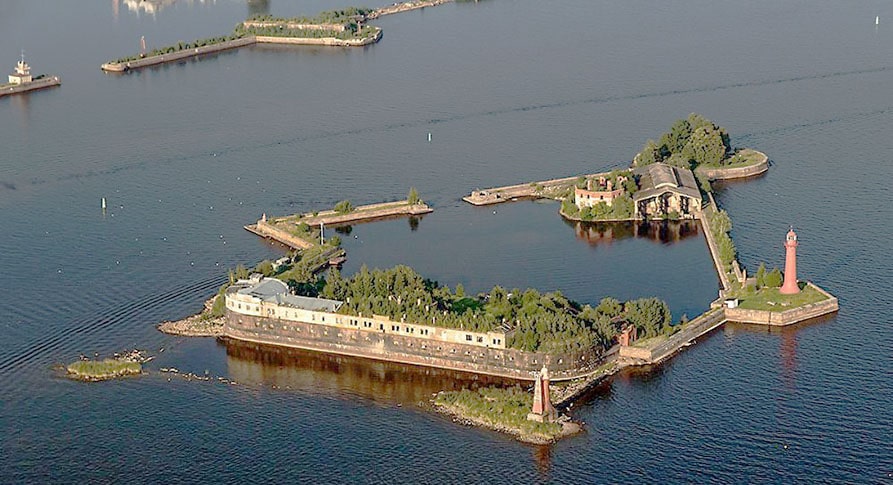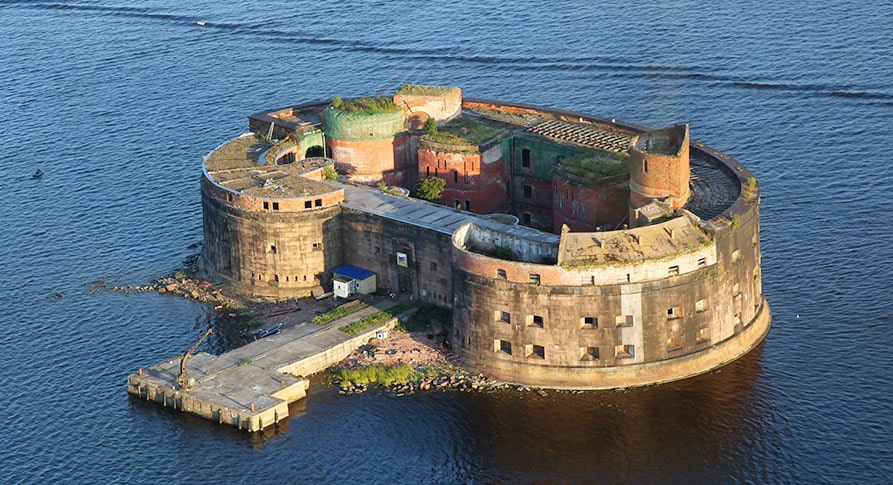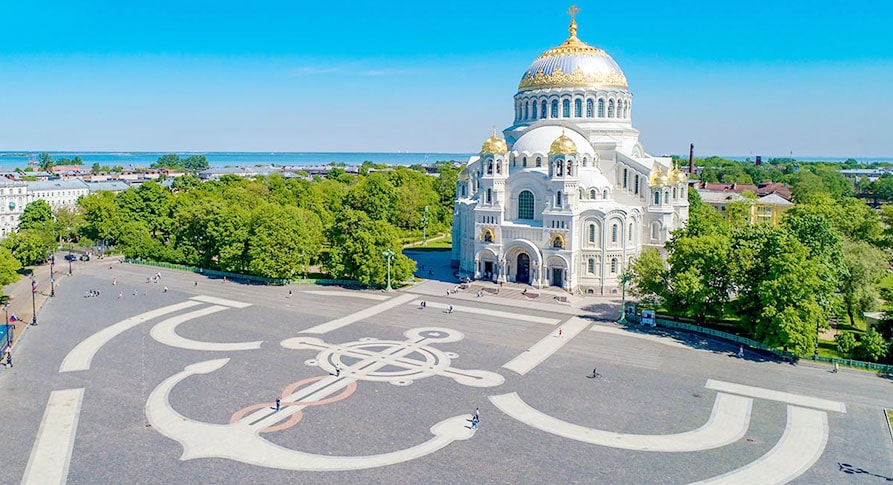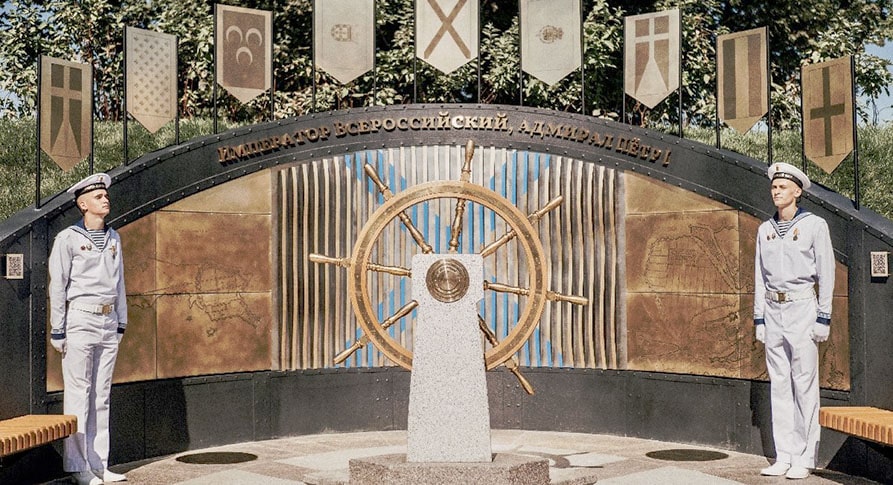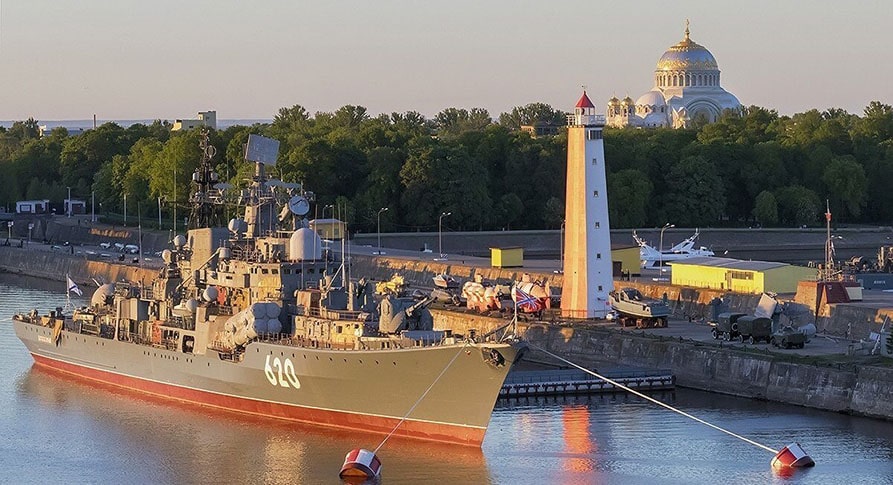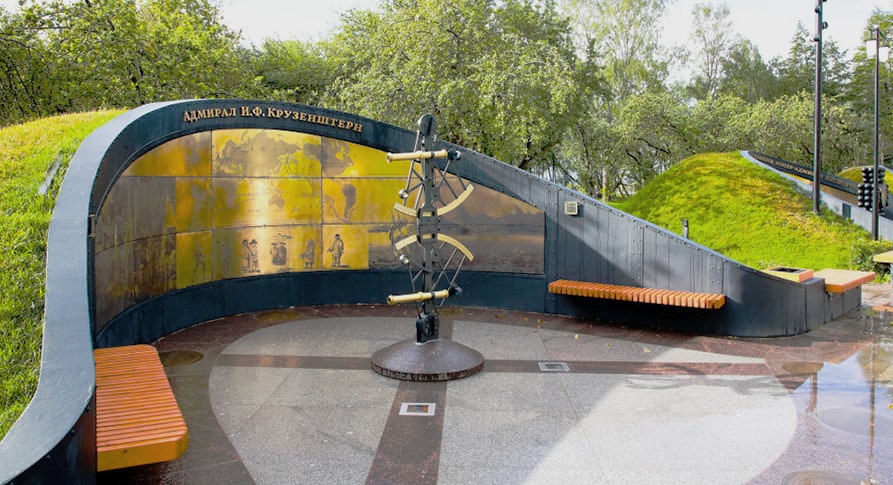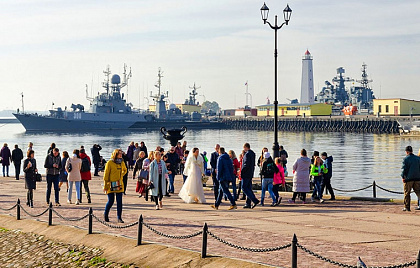Kronstadt
For many years it was impossible even to dream about such a tour. Kronstadt used to be a "closed town" and not only foreign visitors but even locals had no chance to come and see the place. To visit Kronstadt, we needed a very special permission which was possible to get only if you had close relatives or a professional reason to go there. From the sea shore of the Gulf of Finland every one could see a huge dome of Kronstadt's main cathedral, but almost no one could come and see it closer. Legends about unbelievable beauty of this cathedral and rumors about its tragic fate grew in number. Only in 1996 Kronstadt was opened for visitors.
Kronstadt is situated on the island Kotlin in the middle of the Gulf of Finland. It's a town and a fortress at the same time but not just an ordinary fortress - to be exact, it's a unique fortification system consisting of one big fortress and 21 small forts majority of which are built on small artificial islands. Till 2009 the only way to get to Kronstadt was by water. Now after the dam was built, we can drive there.
Kronstadt was started by Peter the Great in 1704 to protect St. Petersburg from the side of the Baltic Sea and since that very moment it's never lost its military importance. Kronstadt is still Russia's main naval base in the Baltic sea and some parts of the big island as well as some of the forts are still military objects and therefore closed for visitors.
Navy officers and sailors always were an elite of the Russian society and therefore felt themselves quite independent. At the time of the Russian Revolution, Kronstadt garrison became the main support of Bolsheviks. They were called "pride and glory of the Russian Revolution". We can even say that to a certain extent the Revolution was made by their hands. Anyway, they were people who were accustomed to creating history. Yet in 1921 being unsatisfied by the Bolsheviks politics they rebelled. Later on, this event will be named Kronstadt Rebellion. The main slogan was "All Power to the Soviets and not to parties", so they actually struggled for the Soviets without the Bolsheviks. Some people believe that this rebellion had a chance to become Russia's fourth revolution, but it was brutally suppressed.
Now when we are walking along quiet and neat streets of Kronstadt, it's difficult to imagine how much turmoil and violence happened here about 100 years ago when these very streets were full of rebelled sailors who tried to turn Russian history in a different direction. We just enjoy charm of the naval town: ships peacefully resting in the harbor (if lucky you will see submarines as well), sailors in beautiful naval uniform, monuments to famous Russian navigators and polar explorers and golden anchors on the silver dome of the famous cathedral.
Main attractions:
– Kronstadt Naval Cathedral. It's so beautiful that even if it was the only one attraction in the whole Kronstadt, it would still be worth to drive there. The Cathedral was built in the very beginning of the 20th century after St. Sophia in Constantinople. The huge dome of it could be easily seen from Peterhof and in good weather even from St. Petersburg. This very dome is covered not with gold as majority of other domes but with silver and decorated with golden anchors on silver plates. The interior of the Cathedral is just astonishing: numerous mosaics, different marbles and stain glass panels. On the walls of the cathedral you will find stone plates with names seamen who perished when in service.
– Fort Konstantin. It's one of the most well-known forts. The constructions were started in 1808 when wooden frames were erected on the shallow and filled in with stones. In such a way an artificial island appeared where an artillery battery was placed. The fort was reorganized many times and used for military purpose up to 1960s. Here you will find former batteries, barracks and a distance finding station. The fort also has an excellent observation point from where you will see a few other forts.
– Fort Alexander ( could be seen only from a distance). This fort looks very similar to the French Fort Boyard and also is known as Plague Fort. At the end of the 19th century it became the place where the first experiments with plague pathogen took place.
– Monument to Admiral Makarov in Anchor Square
– the Merchant harbor
– the Italian Palace of prince Menshikov
– the Petrovskiy dock
– the Kronstadt sea-gauge from which all depths and altitudes are measured
– the Petrovsky Park and the Monument to Peter the Great the Founder of Kronstadt
– monument to tiny fish called stickleback which saved the citizens at the time of siege
– many other interesting sights and monuments

